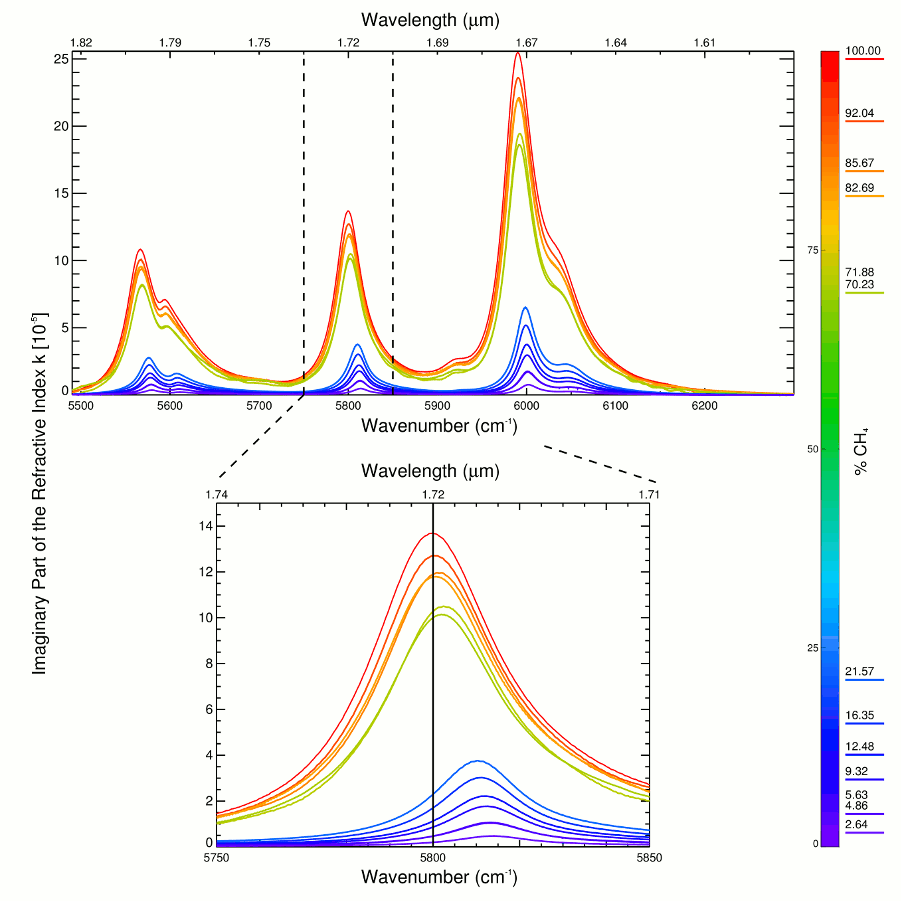
Absorption Coefficients of the Methane-Nitrogen Binary Ice System: Implications for Pluto
Published in 2015: Icarus 253, 179-188.
S. Protopapa1, W.M. Grundy2, S.C. Tegler3, and J.M. Bergonio4
(2) University of Maryland, Dept. of Astronomy, College Park, MD.
(2) Lowell Observatory, Flagstaff AZ.
(3) Northern Arizona University, Dept. of Physics and Astronomy, Flagstaff AZ.
(4) University of Hawai'i, Dept. of Physics and Astronomy, Manoa, HI.
Abstract
The methane-nitrogen phase diagram of Prokhvatilov and Yantsevich (1983) indicates that at temperatures relevant to the surfaces of icy dwarf planets like Pluto, two phases contribute to the methane absorptions: nitrogen saturated with methane N2:CH4 and methane saturated with nitrogen CH4:N2. No optical constants are available so far for the latter component limiting construction of a proper model, in compliance with thermodynamic equilibrium considerations. New optical constants for solid solutions of methane diluted in nitrogen (N2:CH4) and nitrogen diluted in methane (CH4:N2) are presented at temperatures between 40 and 90 K, in the wavelength range 1.1-2.7 μm at different mixing ratios. These optical constants are derived from transmission measurements of crystals grown from the liquid phase in closed cells. A systematic study of the changes of methane and nitrogen solid mixtures spectral behavior with mixing ratio and temperature is presented.

Fig. 10. Top panel: The imaginary part of the refractive index,k, of CH4 - N2 ice mixtures at different mixing ratios at T = 60 K over the range from 5490 to 6300 cm-1. Bottom panel: Expanded view of the ν3 + ν4 + ν2 band.